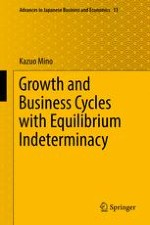2017 | OriginalPaper | Buchkapitel
5. Stabilization Effects of Policy Rules
verfasst von : Kazuo Mino
Erschienen in: Growth and Business Cycles with Equilibrium Indeterminacy
Verlag: Springer Japan
Aktivieren Sie unsere intelligente Suche, um passende Fachinhalte oder Patente zu finden.
Wählen Sie Textabschnitte aus um mit Künstlicher Intelligenz passenden Patente zu finden. powered by
Markieren Sie Textabschnitte, um KI-gestützt weitere passende Inhalte zu finden. powered by
